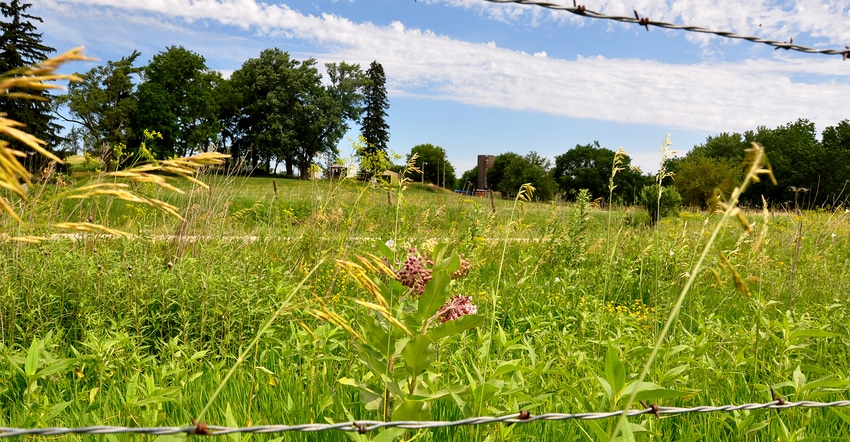May 14, 2020

With a May 29 application cutoff approaching, Iowa conservation partners are encouraging farmers to consider using a federal program that provides financial and technical assistance to establish habitat, benefiting Monarch butterflies and other wildlife.
The Monarch Butterfly Regional Conservation Partnership Program administered by USDA’s Natural Resources Conservation Service helps landowners establish milkweed and other nectar-rich plants that provide food for monarchs and other pollinators, such as honeybees, that are vital to agriculture.
The Monarch RCPP project is funded through NRCS’ Conservation Stewardship Program. NRCS accepts program applications on a continuous basis, but only applications filed by May 29 are eligible for the next round of funding.
Put unproductive areas to work
Jake Swafford, coordinating wildlife biologist with Pheasants Forever, says monarch plantings can be established in areas of unproductive cropland, in sensitive areas such as buffers around waterways or wetlands, in pastures, used to square up oddly shaped fields, and in other suitable locations.
“The Monarch RCPP-CSP also supports new and existing conservation activities on cropland and pastureland,” he says, “helping to reduce erosion, improve soil health, control invasive species, provide quality livestock forage, and make agricultural operations more resilient and productive.”
NRCS state conservationist Kurt Simon says Iowa is one of the national leaders in CSP contracts and acres. Last year, 412 farmers signed five-year CSP contracts that will help treat resource concerns on 119,000 acres. “CSP is a very effective tool for private landowners working to achieve their soil and water conservation and other resource management goals,” he says.
Contact local NRCS office
For more information about the monarch project, visit your local NRCS office or go to ia.nrcs.usda.gov. NRCS staff are working and available by phone or email while taking safety measures in response to COVID-19. While access is restricted to the buildings, services are still available via phone appointment or by email. Visit farmers.gov/connect to find your local office and employee contact information.
Agricultural productivity is directly dependent on pollinators, especially bees and butterflies, for producing more than one-third of U.S. food products. Bee-pollinated commodities account for $20 billion in annual U.S. ag production and $217 billion worldwide. In addition to bees, other pollinators, including butteries and moths, beetles, wasps, birds and bats are necessary for pollinating more than 80% of plants.
Source: NRCS, which is solely responsible for the information provided and is wholly owned by the source. Informa Business Media and all its subsidiaries are not responsible for any of the content in this information asset.
Read more about:
PollinationYou May Also Like




